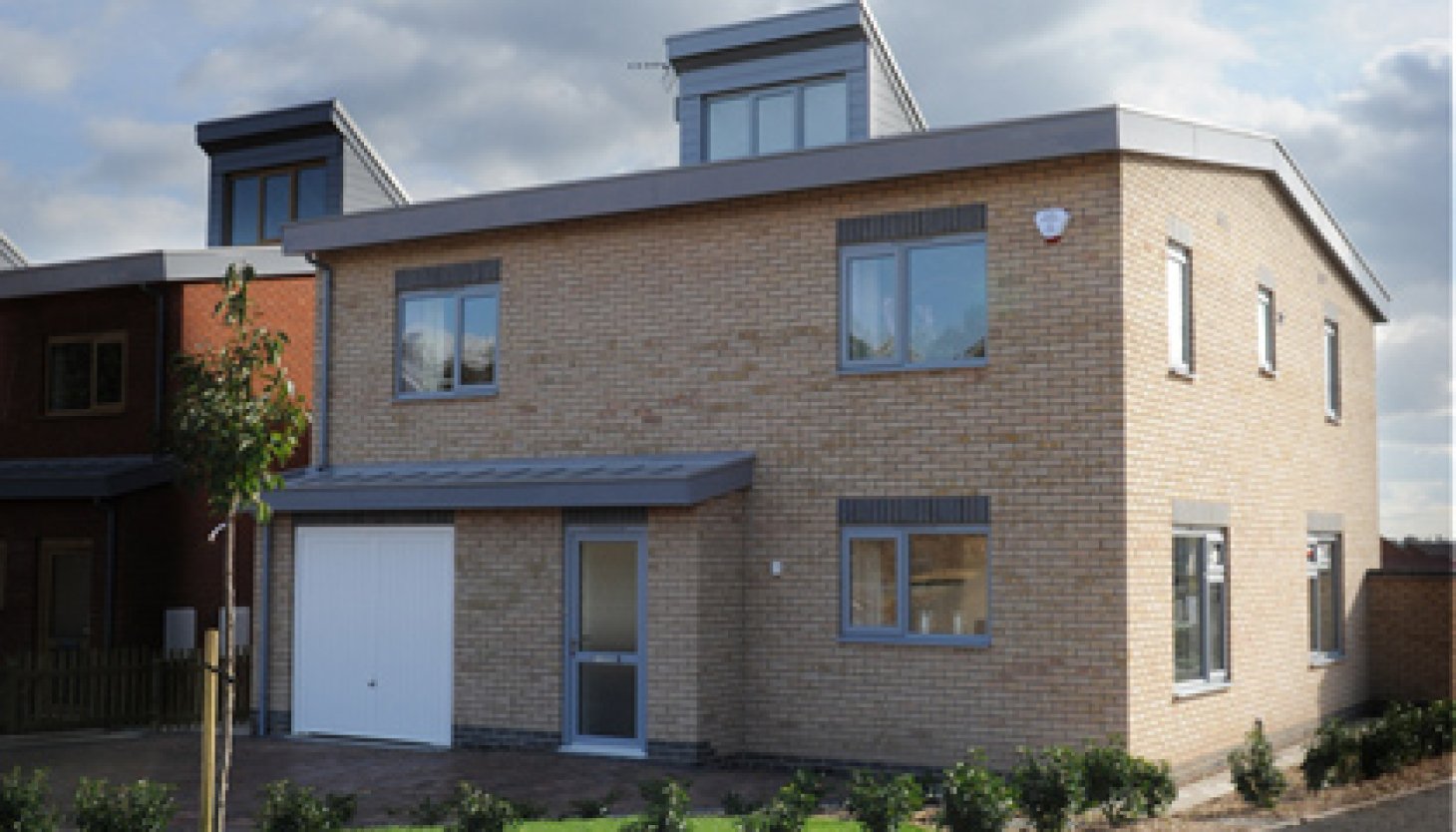
Housebuilder Cawrey Homes specified H+H Celcon Blocks rather than competing products for their new build development of energy efficient homes in Ratby. All thirty six of these homes meet level four of the Code for Sustainable Homes. Cawrey Homes focused on a ‘fabric first’ approach, therefore relying upon H+H Celcon Blocks to build as airtight and thermally efficient building envelope as possible.
Cavity walls with traditional mortar using 3.6N/mm2 H+H Celcon Plus Blocks (610mm x 215mm face size and 100mm thick) were used for the external walls with a 200mm wide filled cavity wall achieving a U value of 0.13 m²K/W. The traditional two coat wet plaster to external walls has helped achieve air pressure test results of below 5m³/h.m²
“H+H has been involved from the beginning”, explains Cawrey Homes manager David Walgate. He continues: ‘It was the technical support and input from H+H staff that really swayed us to use their products. They were always on hand offering advice on how we could meet many aspects of Building Regulations.”
He adds: “The highly insulating properties of H+H Celcon Blocks make them ideal for building this type of modern, energy efficient home and also, being made from largely recycled material, the blocks are environmentally friendly which enhances their suitability even further.”
Michael Turner, the H+H KAM responsible for the project says: “Cawrey Homes have not always used H+H aircrete, but having discussed with them the benefits of our larger format Plus block they decided to try using it in this development.”
Michael adds: “I first discussed this project with David Walgate in 2005 and made regular visits to see him over the years, providing detailed technical advice as and when required. In the end my own and H+H’s continued help and support on the project as a whole made it an easy decision for David and Cawrey Homes to use us”.
The Fielding Meadow £11.5 million development commenced last November and will take a further two years to complete. The 36 ecological plots also use plant sedum on their roofs to reduce water run off and photovoltaic panels to take full advantage of the Feed in Tariff scheme.